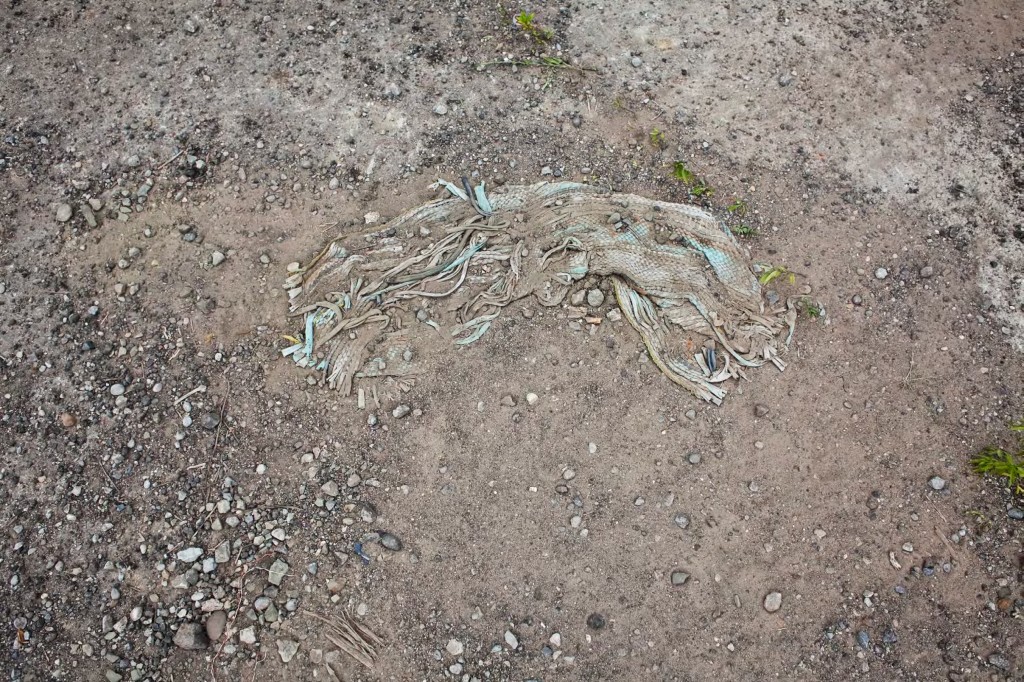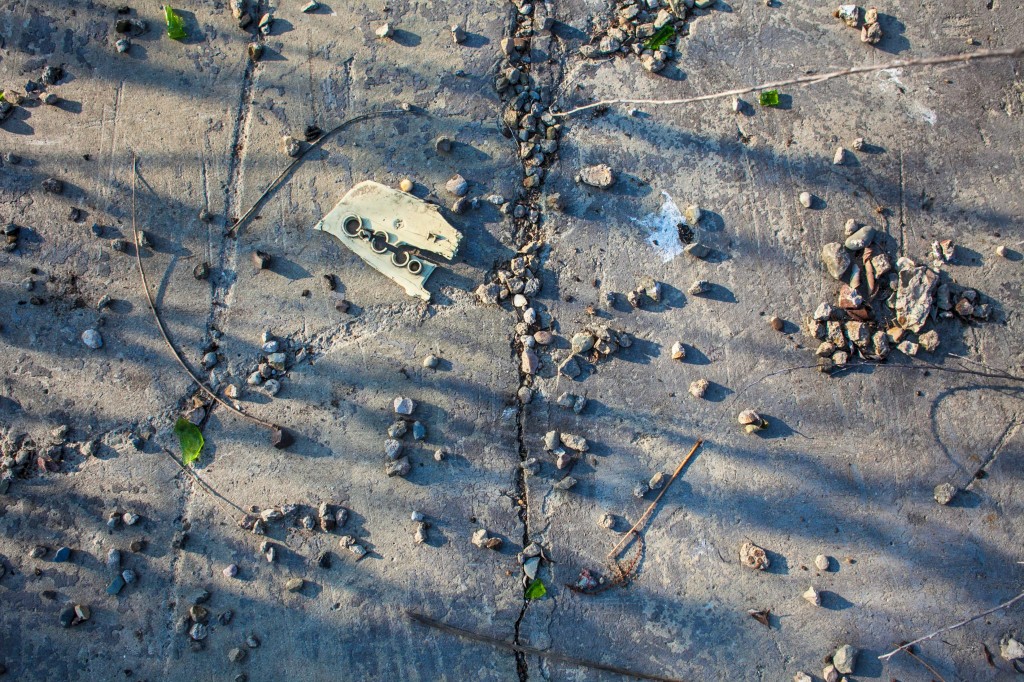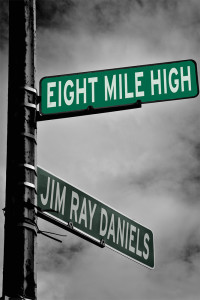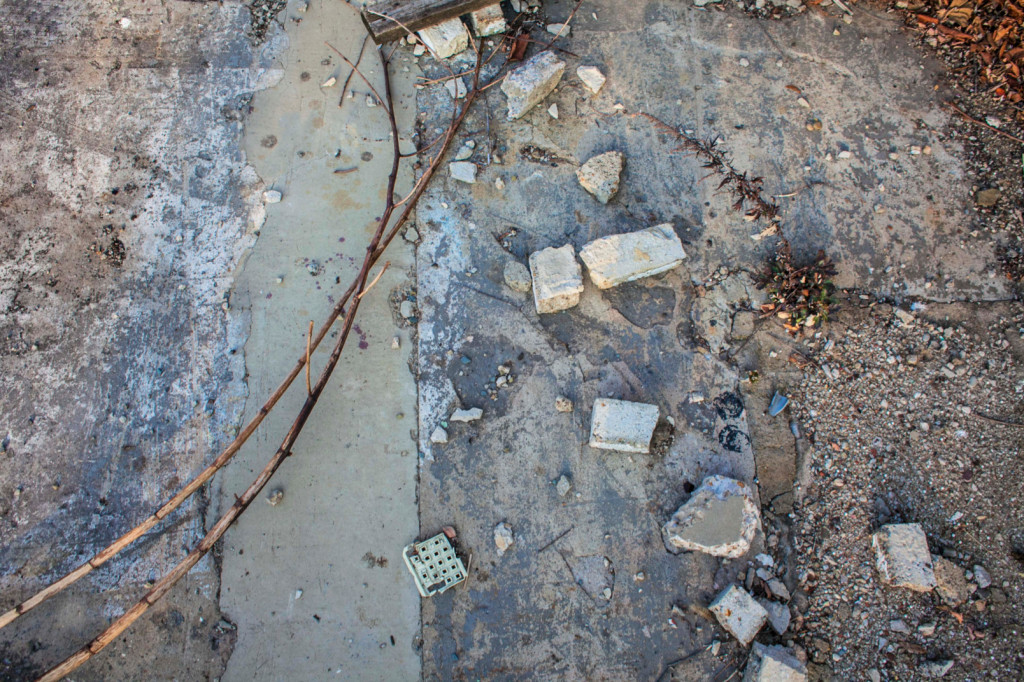NM Outside of productions dependent upon it, collaborations are rarely as seamlessly successful as the Special Feature with your poems and Charlee Brodsky’s photos.
I know you’ve collaborated with other artists. What was your first experience?
JD I had written a series of poems based on paintings by Francis Bacon for my book Blue Jesus (his paintings scare me, and fear is always a good motivator) and had done my first screenplay for the film No Pets.
NM You know Francis Bacon is scary as hell; tell me more about “fear as a motivator”?
JD As a writer, I don’t want to feel too comfortable. I’ve found over the years that if I push through the fear, I might end up in a new place I might not have discovered otherwise. I think the graphic quality of Bacon’s work led me into maybe some darker places that I might not have found otherwise.
NM So, writing from Bacon’s paintings was collaboration?
JD I do think it is a collaboration in some ways—not a literal one, obviously. Maybe the word is “engagement.”
NM How did you end up collaborating on the film No Pets?
JD The Pittsburgh-area filmmaker Tony Buba, best known for his docs, was interested in doing a fictional film, and I gave him my short story, “No Pets,” which he liked and asked me to adapt. I had no idea how to write a screenplay, but Tony worked with me through the process, then let me sit in on casting, filming, and editing. I found myself challenged and invigorated by the process—it got me out of my little room by myself, out of my comfort zone…
NM You know some folks would almost have to be hogtied and drug, kicking and screaming out of their comfort zone… do you remember the first time you “pushed through the fear” you mention?
JD I’m not sure I remember the first time as a particular “aha” moment, but I’m thinking it was with the Francis Bacon paintings. I’d never been compelled to write about art before, and maybe even, given my background, I thought there was something pretentious or elitist about it—art about art, art for art’s sake, or whatever—but I felt this primal connection to his work that wouldn’t let me go. It was something like, “oh, that’s what my nightmares look like.” So when I started writing these poems it was like that creature in Alien that comes out of that guy’s chest—the voice was completely strange to me, blurting out strange phrases, and I was thinking, “Whoa, what the heck is this?” But I pushed through there, trusted the odd voices to take me somewhere.
NM Wow! How did you and Charlee Brodsky first begin collaborating?
JD Charlee and I were part of the founding of this Center for the Arts in Society at Carnegie Mellon, where we both teach, and I was looking for an opportunity to collaborate. I knew and loved her photography, particularly her work in Homestead, a mill town on the edge of Pittsburgh (which turned out to be the subject of our second big collaboration, From Milltown to Malltown).
At the time, I was playing around with these weird things I called “brick poems”—the words were in all caps and spaced out like bricks on a wall with most of the connecting words eliminated. I showed them to Charlee, and she said she had a whole series of photos of brick walls, and they were so much better than my poems that I immediately started writing poems in response to those photos.
NM So the collaboration was an evolutionary spiral of sorts; your poems to her photos her photos to better poems?
JD Definitely. It’s a more interactive engagement. The collaboration itself becomes a responsive entity, and the work develops a relationship beyond “I’ll put your photos in my book or vice-versa?” That whole series—the first thing we worked on together—never made it into a book, but it created a basis of trust and respect so we could move forward working together.
NM Can you talk about how this basis of trust and respect was created?
JD Balancing what Charlee thought were the best photos with what I thought were the best poems, etc. Again, it’s a slow, evolving process. Our first collaborative book, Street, came out in 2005, and we started a couple of years before that. Now, every couple of years we seem to get started on a new project. We’re always both doing our own thing. She was chosen as Pittsburgh Artist of the Year a few years back and had a big show of her work.
NM Do you two have a plan or vision of how it will come together?
JD The vision thing is always an evolving process—that’s one of the great things about collaboration—you bounce these ideas off each other and the work slowly coalesces. We usually start out at Charlee’s big table where she spreads out what she’s working on, and I pick up ones that pull me in, intrigue and interest me in some way, and take them home and spend some time with them. I like to just start free-associating on the photos—it’s like rubbing sticks together—sometimes I can get a little fire going, and other times I break the sticks, or get them wet, or whatever. I feed off the energy of her photos so that when things are going well, I’m not just describing what’s already there, but I’m going some place strange and different—taking a coal from her fire to start one of my own. I know my metaphors are mixed up a bit there, but it has something to do with fire.
NM That’s an amazing image of the collaborative creative process…hmmm…fire, coal, fire…anything to do with your hometown, “Steel-town?”
JD Yeah, maybe. We’ve been doing more electronic exchanges with pdfs, etc., but I still prefer having the physical thing in my hand.
NM Nothing like the real thing…its like there’s a layer or filter between it and you-a visual condom…better than nothing, well “nothing” is better, but you know what I mean.
JD Ha! It’s true—One thing I do use the pdfs for is to enlarge the image and/or zoom in on a particular detail that intrigues me, so that’s a plus.
NM Hmm, maybe we’ll drop the condom metaphor right now? How does writing in collaboration differ from writing alone?
JD It’s exciting and unpredictable. As a writer, one of the most exciting things for me is when these poems come out of nowhere—these strange voices start coming in that are very different from the usual voice in my poems. This work stretches me— a lot of my work—poetry and fiction—often uses first-person narratives as a guiding structure, where the collaborative work is all over the map. Or, even, for me, off the map.
NM Speaking of off the map, the feature’s first poem, Returning to Earth, begins literally off the map!
This title is so perfectly economical; it announces the poem’s subject, “returning”; establishes physical and psychic tone and terrain; launches the narrative trajectory created by the photos and poems of The rest of the news, and, as all the best poems do, it both informs and perplexes.
For example, we know the speaker has been away from earth, but we don’t know via what or how. Was the departure intentional, via NASA, meditation, sleep, a slug of Ayahuasca or was the speaker blasted into the stratosphere by an accidental or nefariously orchestrated, apocalyptic catastrophe? Is the returning a conscious “re-turning” back to earth, a “fall from grace” or the irrefutable law of gravity at work? The poem’s answers to these questions
I don’t know much
about disintegration
but I’m learning.
intimates that the speaker is losing former psychical and psychic integrity in the descent back to earth, and whatever energy authored the blast from earth, or the return to was intent upon annihilation:
Erasure has many techniques
but only one result.
I’m intrigued with how the stanzaic structure and the asterisks between create a sense of slow descent, a floating in and out of conscious, the asterisks denoting great swaths of time or lapses in consciousness. The closer to earth, the more fully conscious the speaker becomes and struggles to make sense of the landscape below.
It’s a visceral thrill of seeing the photographs following the poems. Together they become, are like—and I absolutely adore this, and in some way find great humor, pathos in this—an X-file of text and hard photographic evidence.
Case in point: the alien rag in
Alien rag from space
or variation on worms
or octopi or jellyfish
or bad luck.
*
Dried up –sea floor.
Drought of love.
And yet confetti
rises once again.
is clearly identifiable in the photo-document following the poem. We see this consistent documentation of the subject matter under investigation (the rest of the news) at the scene of the crime (Earth) in the poems following Returning to Earth
The rest of the news
is returning to earth.
And you know, what? Dang! …although you’ve told us that you wrote the poems from the photos, you can’t convince my mind that these photos do not document the text. Is this one of the amazing surprises of collaboration you talk about?
JD Well, when it’s working, yes. There’s some reverse double-whammies going on in terms of psychic reversals. The photos seem like inevitable manifestations of things that I’m feeling. I know that sounds a little wacky, but I don’t know how else to say it.
NM Does not sound wacky in the least! I cannot tell you how much the final poem’s text and photo document of this X-file blew me away; pure genius. Without revealing too much, let me just say, Mission Accomplished! It’s been a blast, Jim, many thanks!
JD Thank you!
Returning to Earth
I don’t know much
about disintegration
but I’m learning.
Erasure has many techniques
but only one result.
*
The color of ash—
first color
or the last?
*
Faded by sunlight
frayed by moonlight.
*
Deliberately stepped on
or avoided.
*
Alien rag from space
or a variation on worms
or octopi or jellyfish
or bad luck.
*
Dried-‐up sea floor.
Drought of love.
And yet green confetti
rises once again.
*
Facts are elusive.
Ash vs. Dust?
*
My only fact:
a human hand once held this thing.
The rest of the news
is returning to earth.

The Shelter of Coffins
Are we drawn toward getting under, breaking
through, to bury ourselves in the cold, moist dirt
of disappearance? What came first, the crack,
or the pieces of rubble in the crack?
In other words, did we start out playing
for the Cement Slabs, then go off on our own,
or did they kick us off the team?
Okay, out with the questions
in with the myths: Once upon a time
a great clanging was heard in the night
and when the sun arose the next day
the Four-‐Holed Shiny Thing
was visible. It had crushed
our fearless leader, Moldy Pebble.
Some say he remains alive
in shadow, awaiting
The Great Uplifting. Others
believe he escaped into
the Large Dump Truck
and will return one day
for the rest of us. Every year
we make a pilgrimage
to the shrine of the Four-‐Holed
Shiny Thing and pray at the altar
of the Moldy Pebble. I don’t
know what happens if we don’t.
I haven’t gotten that far in the myth.

Privacy
Have you woven
plastic strips between chain links
imagining you might make a stand
against the world, looping in and out
while neighbors watch, wary,
tossing empties against the fence
while you try to establish
some flimsy order against chaos
and the lack of choice that put them next to you?
Who can afford to move
and even the damn strips weren’t cheap
row upon row you can’t stop.
A helicopter heading to the hospital
can see it all if they’re looking down
if the patient is alive
if the world is flat if god is your
witness oh lord it all unravels
the years unspooling into grief.
Not even concrete blocks
can keep it away.
Hole in the Theory
If we disguise our flaws
with designed borders
how can we keep other
flaws from emerging
to mock our imagined
grand design?
Nature’s bunny ears
mock us, our un-‐
tamed pets on
the loose.
They don’t come
when we call.

After the Flood
When the waters rose back up
or sunk deeper
I stared at what remained
of the rest of my life
the layer of grief
coating it
with the dry cough of disintegration.
I searched for a source of nostalgia
in memories of high water
and the jangly music of the fear
I danced to. Oh, the panicked
joy of it. I took a stick and began
to scratch lies into the curled mud.

Dinosaur Bones with Crown of Thorns
Synchronize your watches
then step on them.
*
Time began
when the fat lady sang
or vomited at the sight
of us.
*
What calendar do you use?
What calendar do you abuse?
*
They crucified a circus clown by
mistake, taking the orange hair
as the devil’s twisted halo.
Or so the legend goes.
Because someone wrote it down
it must be true. As this
must be true.
*
If you drop an angel
and a chunk of cement
at the same time, which lands first?
Which hurts
the most?
*
What came first
the calculator or the telephone?
If Noah sent out a dove
to see if the waters
had receded
was that bird the first UFO?
*
What did the other dove do?
Was it lonely?
It comes down
to being lonely
no matter how many
buttons you press.
*
Are you wearing your glasses
for distance or close-‐up?
The world started a zillion years ago
when the dinosaurs discovered
the joy of killing and meat.
They decided to leave some bones behind
just to fuck us up.
*
Imagine the surprised dinosaur
losing its teeth in the old folks home
and being transmogrified
into a treacly children’s TV star:
“Hey,you folks seen my teeth?”
he asks the fake children
but it comes out as
“And remember, I love you.”
Then, he eats the children.
All the dinosaurs applaud.
*
If these remains
are what the stripper left
before exiting naked
stage right, behind the dark curtain
then what did her original outfit
look like? Scientists spent
centuries arranging the remains
into articles of clothing.
Thus, haute couture was born.
We memorialize this event
to Terre Haute, Indiana.
*
The crown didn’t fit.
What were they thinking?
They fired the crown maker.
A lion jumped through
the crown of thorns.
The crucified dinosaurs
tried to applaud
but their tiny arms
were nailed down.
*
Who ate that dove?
Where is that recipe?
Where are the ruins of the true ark?
Hasn’t that astronaut found them yet?
Are they in Little Rock, Arkansas?
In Big Rock, Illinois?
On the Big Rock Candy Mountain?
*
The scientists of myth
are hard at work
hand-‐crafting new relics
for sale in the gift shop.
*
And then Jesus walked out
of the spaceship.
That’s how all my stories end.
Jim Daniels (Poetry) has published fourteen books of poetry. His recent collections include Having a Little Talk with Capital P Poetry, Carnegie Mellon University Press (winner of the Independent Publishers Book Award for Poetry) and All of the Above, Adastra Press, both published in 2011. His fourth collection of short stories, Trigger Man, was published in 2011 by Michigan State University Press, and won the Midwest Book Award for Short Fiction. His fourteenth book of poems, Birth Marks, was published in 2013 by BOA Editions.
Charlee Brodsky, a fine art documentary photographer and a professor of photography at Carnegie Mellon University, describes her work as dealing with social issues and beauty. In 2012 she was honored to be Pittsburgh’s Artist of the Year chosen by Pittsburgh Center for the Arts. A selection of her awards includes the Tillie Olsen Award with writer Jim Daniels for their book, Street; an Emmy with the film team that created the documentary, Stephanie, which is based on her friend’s life with breast cancer; the Pearl of Hope award given by Sojourner House for her work with her students in the Pittsburgh community; and Pennsylvania Council on the Arts fellowships. She continues her documentary projects but also has a body of work that uses her little white dog, Max, to voice words by great thinkers. This work is a series of artist books and prints and can be viewed at: www.thespotpress.com.
Nancy Mitchell is the author of two volumes of poetry, The Near Surround (Four Way Books, 2002) and Grief Hut (Cervena Barva Press, 2009), and her poems have appeared in Agni, Poetry Daily, Salt Hill Journal, Great River Review, and are anthologized in Last Call by Sarabande Books, 1997. Her reviews have appeared in Poet Lore and Marlboro Review, and poems and a teaching exercise on Sound are anthologized in The Working Poet, Autumn House Press, 2009. A 2011 Pushcart Prize recipient, she resides in Salisbury, on the Eastern Shore of Maryland, with her husband John Ebert, a filmmaker.




